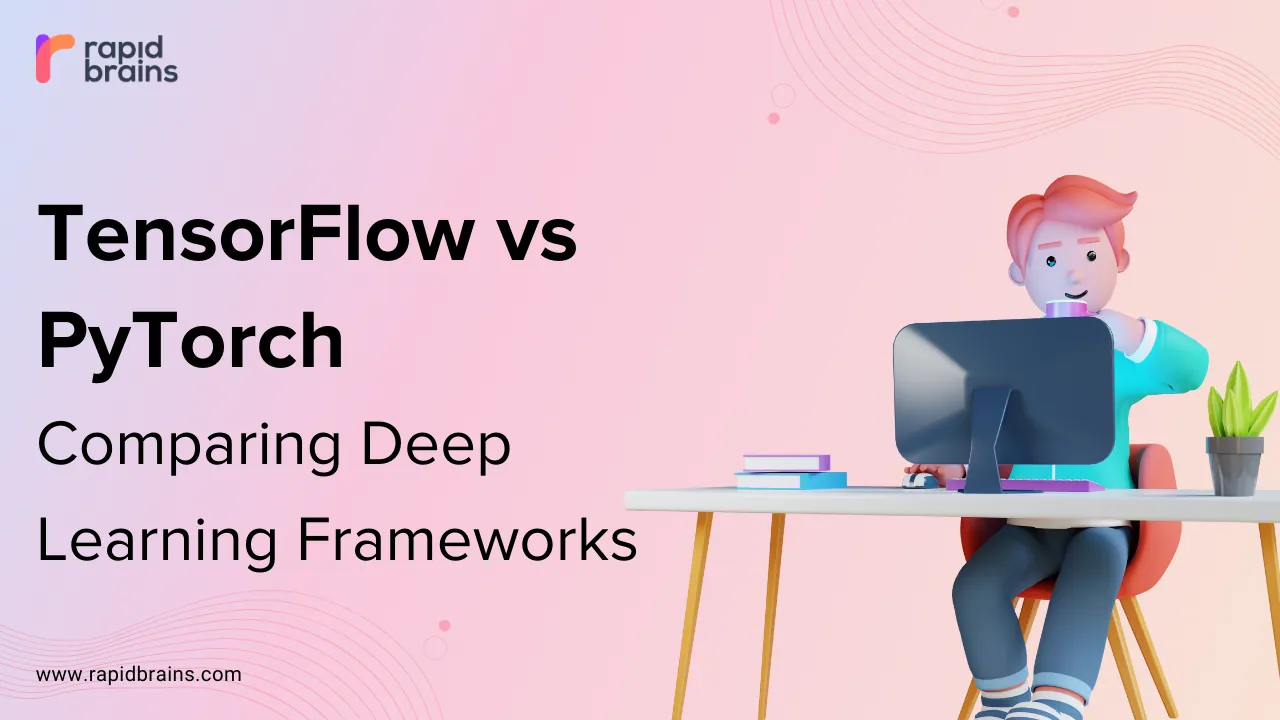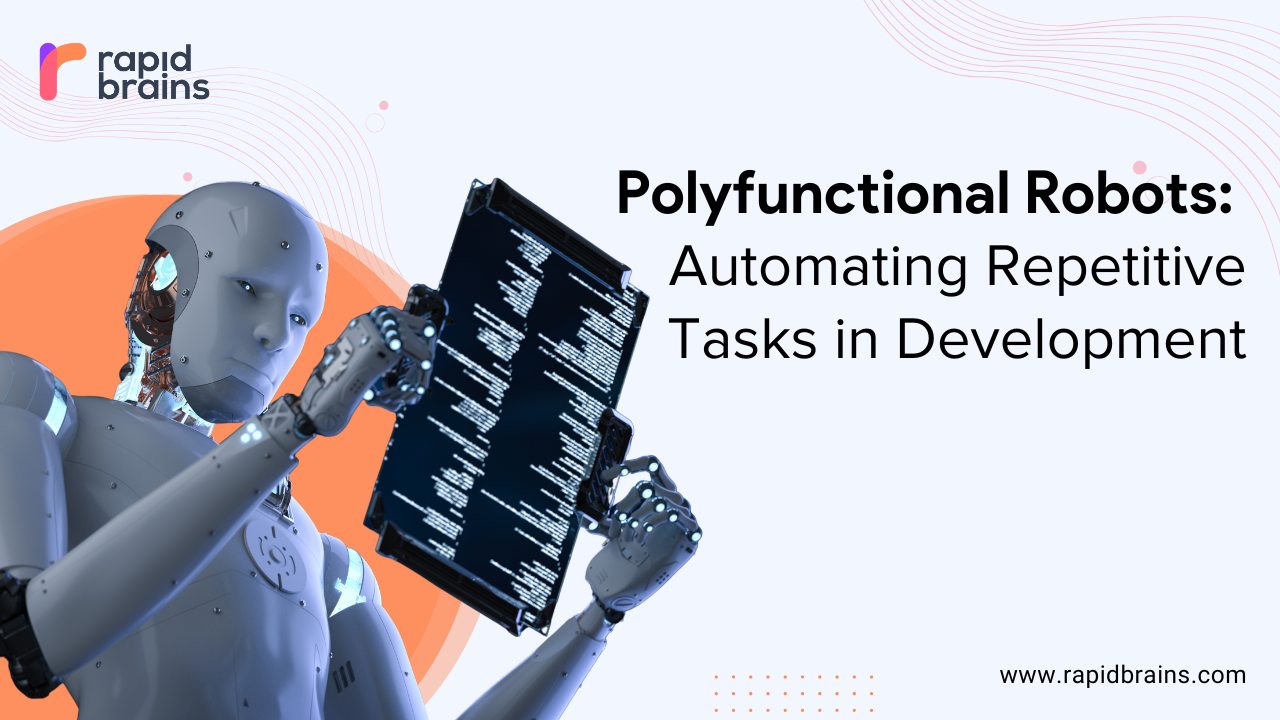
Introduction:
In the realm of deep learning, TensorFlow and PyTorch stand out as two of the most popular and widely-used frameworks. Each brings its own set of features, strengths, and weaknesses to the table. This blog post aims to provide a comprehensive comparison between TensorFlow and PyTorch to help you make an informed decision when choosing a framework for your deep learning projects.
What is TensorFlow?
TensorFlow is an open-source deep learning framework developed by the Google Brain team in 2015. It has become one of the most popular and widely-used libraries for building machine learning and deep learning models. The main focus of TensorFlow is on creating neural networks and other machine learning algorithms efficiently, especially for large-scale applications.
History of TensorFlow
TensorFlow’s history can be traced back to a project called DistBelief, which was Google’s first-generation distributed deep learning system. DistBelief was used internally at Google for various machine learning tasks. In November 2015, Google released TensorFlow as an open-source project under the Apache License 2.0, making it accessible to developers worldwide.
Key Features that Set TensorFlow Apart
Flexibility and Scalability
TensorFlow provides developers with a versatile and scalable platform to design and train deep learning models. The framework allows for the creation of intricate neural networks tailored to diverse tasks.
High-Performance Computation
Making the most of GPUs (Graphics Processing Units) and TPUs (Tensor Processing Units), TensorFlow ensures blazing-fast computation, enabling swift training and inference processes.
Cross-Platform Support
TensorFlow extends its reach across various platforms, be it Windows, macOS, Linux, or mobile devices, making it a ubiquitous tool accessible to developers in all environments.
Dataflow Graphs
TensorFlow employs the concept of a dataflow graph to represent computations as a series of interconnected nodes. This innovative approach facilitates efficient parallel processing and optimization.
Eager Execution
Introducing eager execution, TensorFlow allows developers to execute operations instantly, thereby simplifying debugging and promoting interactive experimentation.
Extensive Library Support
TensorFlow boasts an extensive ecosystem of pre-built machine learning and deep learning models, easily accessible through its high-level APIs, like Keras.
Pros of TensorFlow
Powerful and Versatile
TensorFlow’s vast array of tools and libraries empowers developers to build a wide range of machine learning and deep learning models, from simple to complex.
Large Community and Support
TensorFlow’s popularity has led to a thriving community, providing excellent support, numerous tutorials, and code examples.
Production-Ready
TensorFlow’s scalability and performance make it well-suited for deploying machine learning models in production environments.
Integration with Other Libraries
TensorFlow seamlessly integrates with other popular libraries like NumPy and Pandas, enhancing its capabilities and usability.
Support for Mobile and IoT Devices
TensorFlow Lite allows developers to run models on mobile and edge devices, making it ideal for mobile and IoT applications.
Cons of TensorFlow
Steep Learning Curve
TensorFlow’s syntax and graph-based approach can be challenging for beginners, requiring some time to grasp the concepts fully.
Verbose Code
Writing TensorFlow code can be verbose, particularly for complex models, which might make the code less readable.
Resource-Intensive
While TensorFlow’s performance is impressive, it may require significant computing resources, especially for training large models.
Limited Eager Execution Support
Although TensorFlow introduced eager execution, not all functionalities and optimizations are available in this mode.
What is PyTorch?
PyTorch, an open-source deep learning framework developed by Facebook’s AI Research lab (FAIR), has garnered immense popularity among researchers and developers since its release in October 2016. Its dynamic computation capabilities and user-friendly design make it a top choice for deep learning enthusiasts worldwide.
History Of PyTorch
The origins of PyTorch trace back to 2002 when a research project called Torch was born at the University of Montreal, under the guidance of Ronan Collobert and his team. Over time, in 2011, Soumith Chintala joined Collobert to create an open-source version of Torch, gaining substantial traction in the deep learning community. Eventually, Facebook AI Research (FAIR) embraced the project and introduced the world to PyTorch in October 2016.
Key Features that Set PyTorch Apart
Dynamic Computation Graphs
Embracing a dynamic computation graph approach, PyTorch builds the graph on-the-fly during operations, fostering an intuitive and flexible programming environment. Researchers and developers can easily experiment with models, thanks to this dynamic nature.
User-Friendly Design
PyTorch’s simplicity and Pythonic syntax closely resemble regular Python code, making it easily approachable even for those new to deep learning. The learning curve is significantly reduced, facilitating quicker adoption.
Powerful Tensor Operations
Equipped with a robust library for tensor operations akin to NumPy, PyTorch efficiently handles and manipulates multi-dimensional arrays – a fundamental aspect of deep learning.
Autograd
Essential for training neural networks with backpropagation, PyTorch incorporates automatic differentiation through the autograd module, automatically computing gradients for tensors.
TorchScript
With TorchScript, PyTorch enables developers to write code that can be executed outside of Python, thereby enhancing deployment and integration capabilities.
Pros of PyTorch
Easy to Learn and Use
PyTorch’s Pythonic syntax and dynamic computation graph make it an inviting choice for beginners and researchers, even in the absence of prior deep learning experience.
Streamlined Debugging
The dynamic nature of PyTorch allows for instant inspection and debugging of tensors and models, significantly expediting the development process.
A Haven for Research
PyTorch’s dynamic computation graph aligns perfectly with the demands of research and experimentation, earning it a prominent place in the academic community.
Robust Community Support
With a strong and rapidly-growing community, PyTorch boasts extensive resources, tutorials, and libraries to aid developers on their deep learning journey.
Seamless Integration
PyTorch effortlessly integrates with the Python ecosystem, leveraging the power of popular libraries like NumPy and Pandas for efficient data manipulation and preprocessing.
Cons of PyTorch
Deployment Considerations
While PyTorch provides TorchScript for deployment, TensorFlow’s static computation graph is often favored in production settings for enhanced optimization.
Scalability Concerns
In the realm of large-scale distributed training, TensorFlow’s distributed computing capabilities outshine those of PyTorch, presenting an area for further growth.
Mobile Support Development
Although TensorFlow boasts TensorFlow Lite for mobile deployment, PyTorch’s mobile support is not yet as established.
Common features of TensorFlow And PyTorch
PyTorch and TensorFlow are both popular deep learning frameworks, and they share several common features, which contribute to their widespread adoption and success. Here are some of the key common features between PyTorch and TensorFlow
Tensor Operations
Both PyTorch and TensorFlow provide efficient and powerful tensor operations, allowing developers to perform mathematical computations on multi-dimensional arrays with ease. These tensor operations are fundamental to building and training deep learning models.
Automatic Differentiation
Both frameworks offer automatic differentiation, which enables the calculation of gradients automatically during backpropagation. This feature is crucial for training neural networks using gradient-based optimization algorithms.
GPU Support
PyTorch and TensorFlow take advantage of Graphics Processing Units (GPUs) to accelerate computations, significantly speeding up training and inference processes for deep learning models.
Deep Learning Models
Both frameworks offer a wide range of pre-built deep learning models, making it easier for developers to use and experiment with popular architectures without starting from scratch.
High-Level APIs
PyTorch and TensorFlow provide high-level APIs that simplify the process of building and training neural networks. PyTorch has its high-level API called “TorchScript,” while TensorFlow provides “Keras” as its high-level API.
Community and Resources
Both frameworks have vibrant and active communities that contribute to extensive documentation, tutorials, and online resources. This community support makes it easier for developers to seek help and share knowledge.
Extensibility
PyTorch and TensorFlow are highly extensible, allowing developers to customize and extend the functionality to suit specific requirements and research needs.
Support for Deployment
Both frameworks offer tools and methods for deploying models to production environments. TensorFlow has TensorFlow Serving and TensorFlow Lite for deployment, while PyTorch provides TorchScript and PyTorch Mobile.
Visualization Tools
PyTorch and TensorFlow come with built-in visualization tools that facilitate model visualization, debugging, and performance analysis.
Cross-Platform Compatibility
Both frameworks are designed to work on various platforms, including Windows, macOS, Linux, and mobile devices, enabling developers to build applications for diverse environments.
These common features make PyTorch and TensorFlow powerful and versatile deep learning frameworks, empowering developers to create state-of-the-art machine learning models and push the boundaries of AI research and applications.
Conclusion
The comparison between TensorFlow and PyTorch reveals the distinct strengths and advantages that these deep learning frameworks offer to developers and researchers alike.
TensorFlow, renowned for its static computation graph and expansive ecosystem, excels in large-scale production deployments and tasks demanding high performance. Its vibrant community support, extensive library of pre-built models, and compatibility with various platforms position it as a robust choice for crafting intricate machine learning applications.
On the other hand, PyTorch’s dynamic computation graph and intuitive Pythonic syntax make it a darling among researchers and beginners. With a focus on research-oriented experimentation, user-friendliness, and seamless debugging capabilities, PyTorch emerges as an ideal companion for academic projects and rapid prototyping.
Selecting between TensorFlow and PyTorch hinges on the project’s specific requirements and the expertise of the developer. For production-centric applications calling for optimal performance and scalability, TensorFlow may emerge as the preferred option. Meanwhile, researchers and developers seeking a flexible, easy-to-use, and dynamic environment may find PyTorch to be the better fit.
Both frameworks have significantly contributed to the evolution of deep learning, nurturing dedicated communities that consistently push the boundaries of artificial intelligence. Regardless of the choice, developers can confidently harness the power of TensorFlow or PyTorch to construct state-of-the-art machine learning models and make significant strides in the captivating realm of AI innovation.




